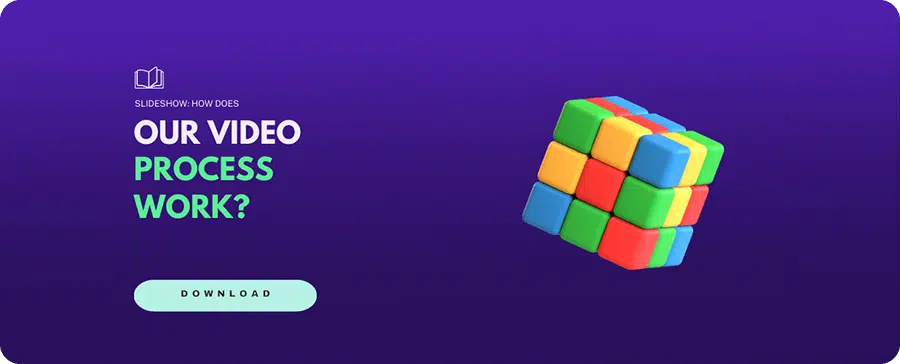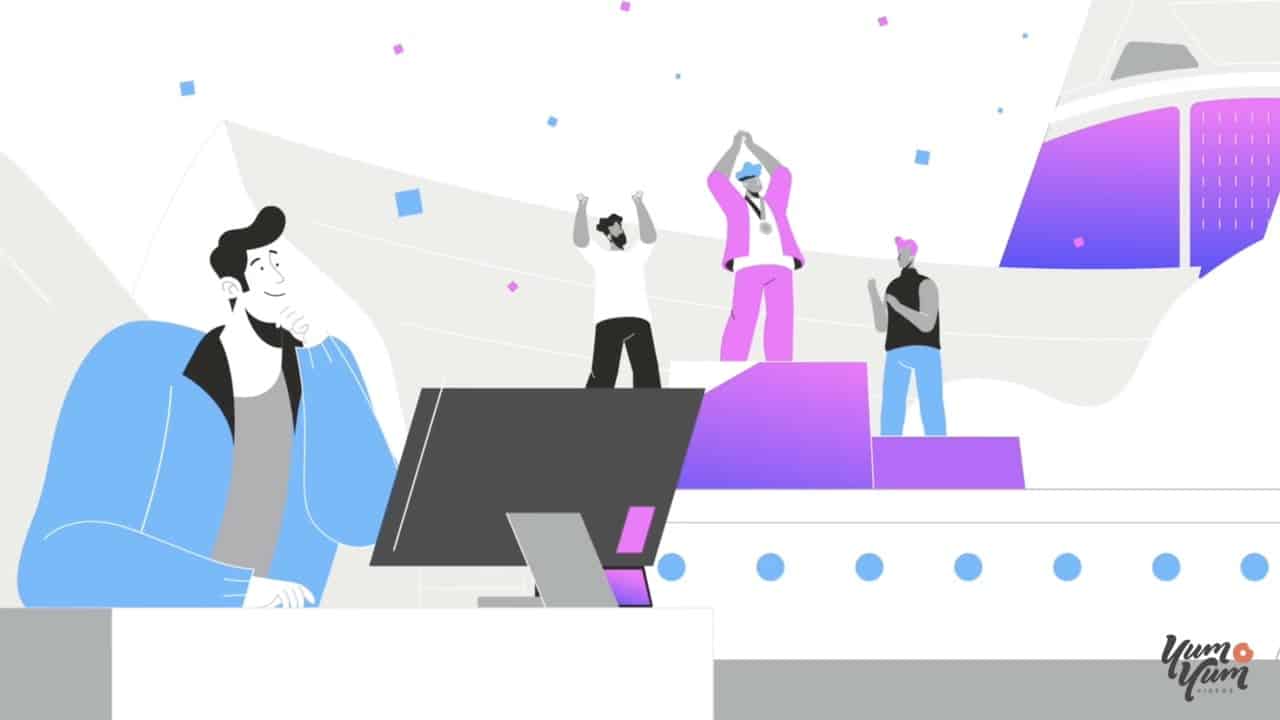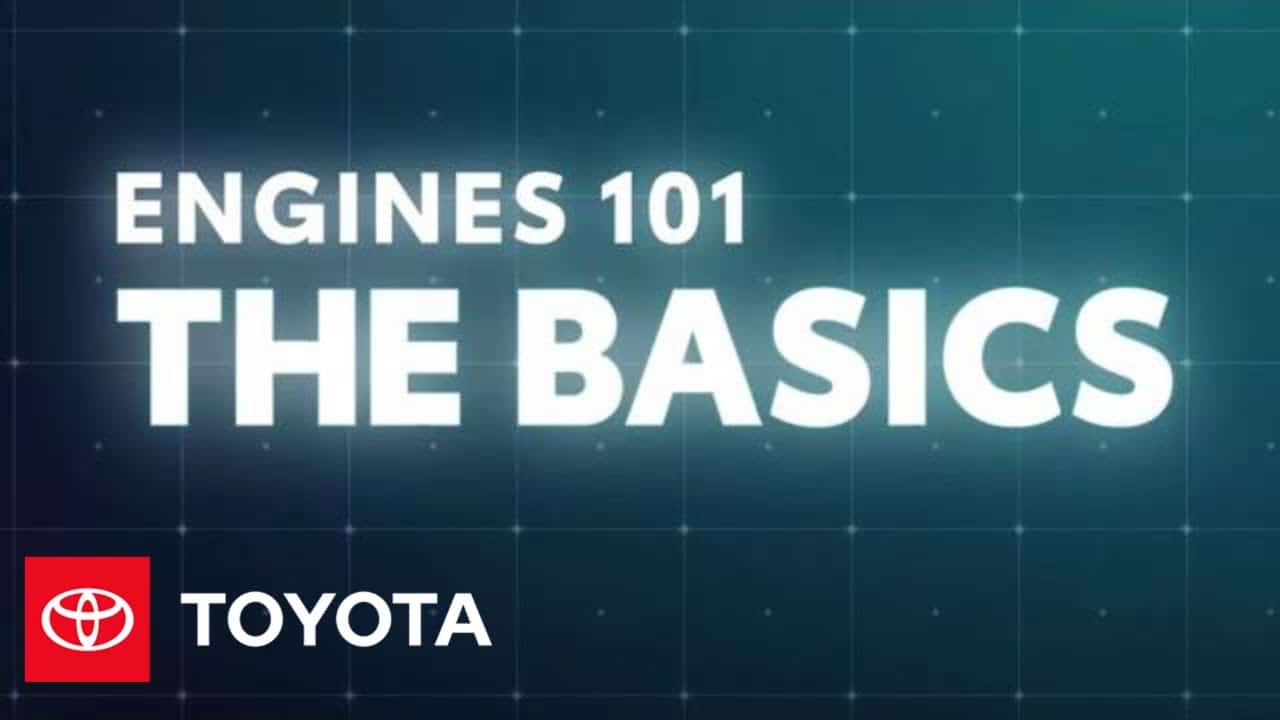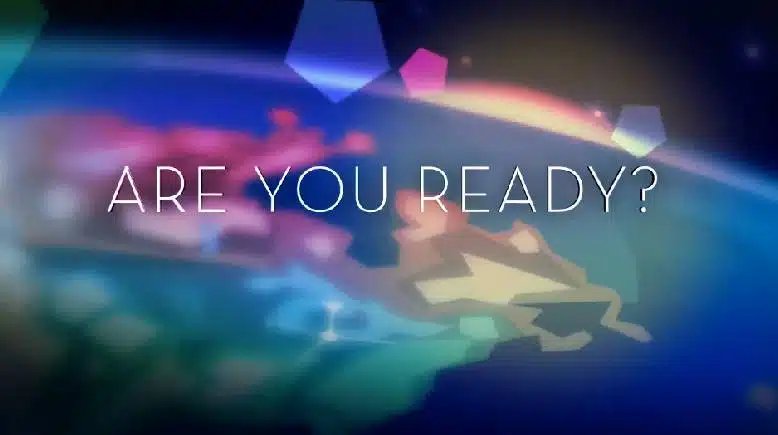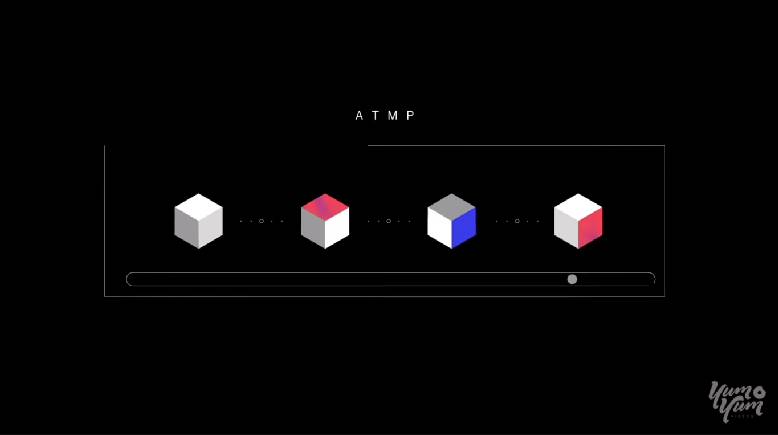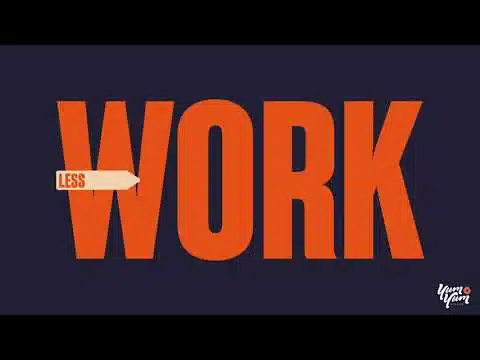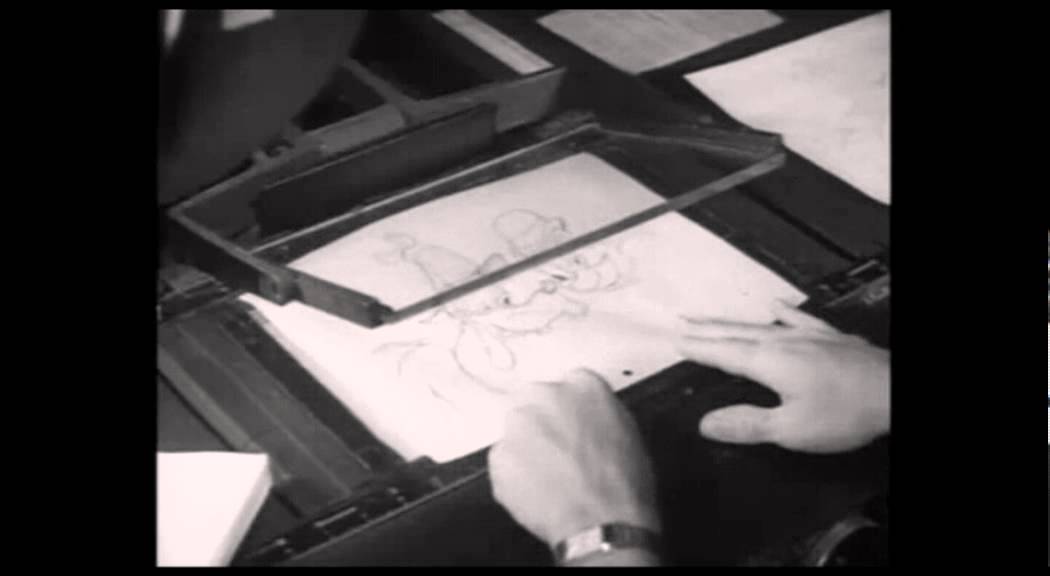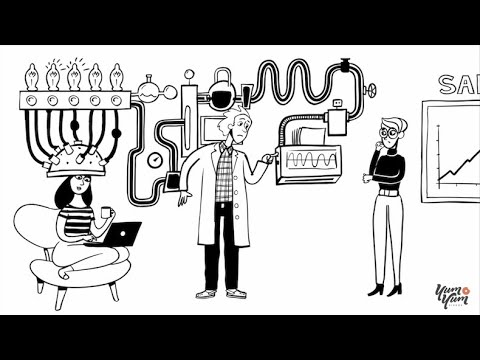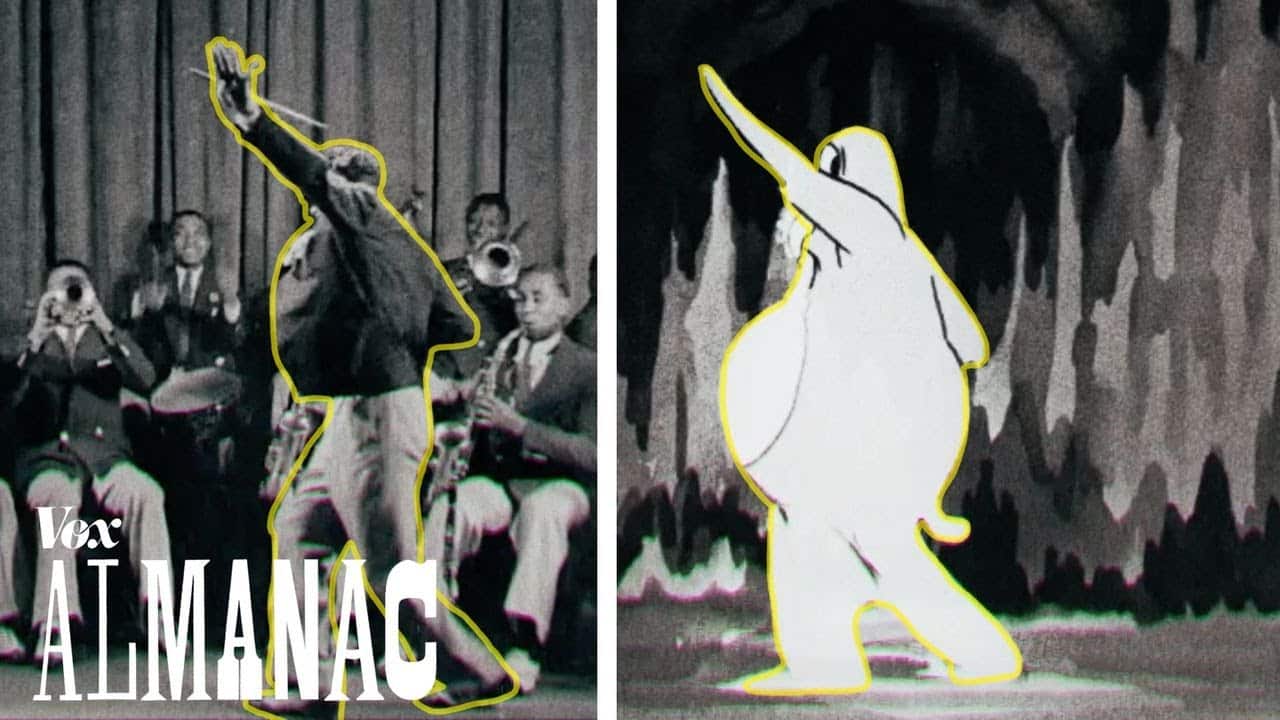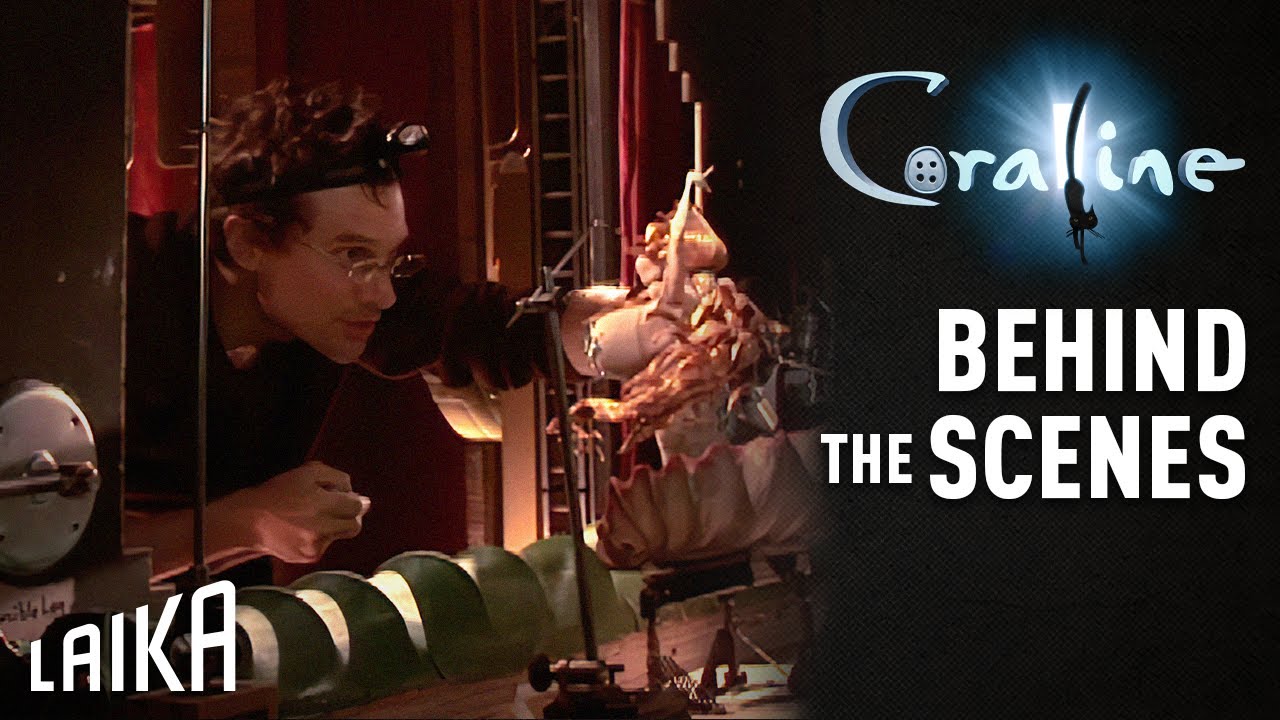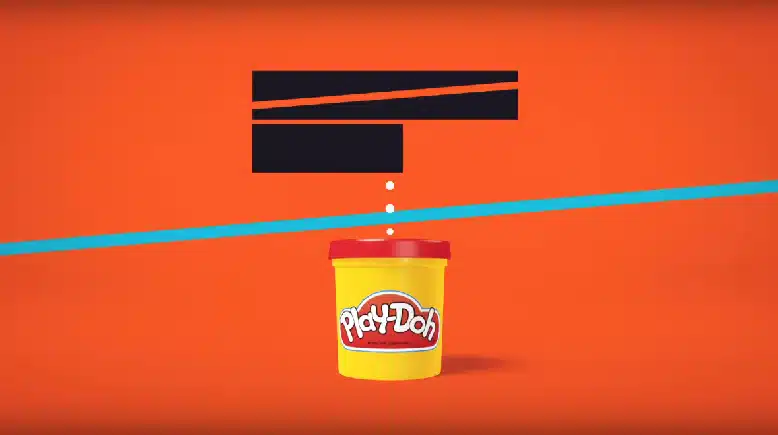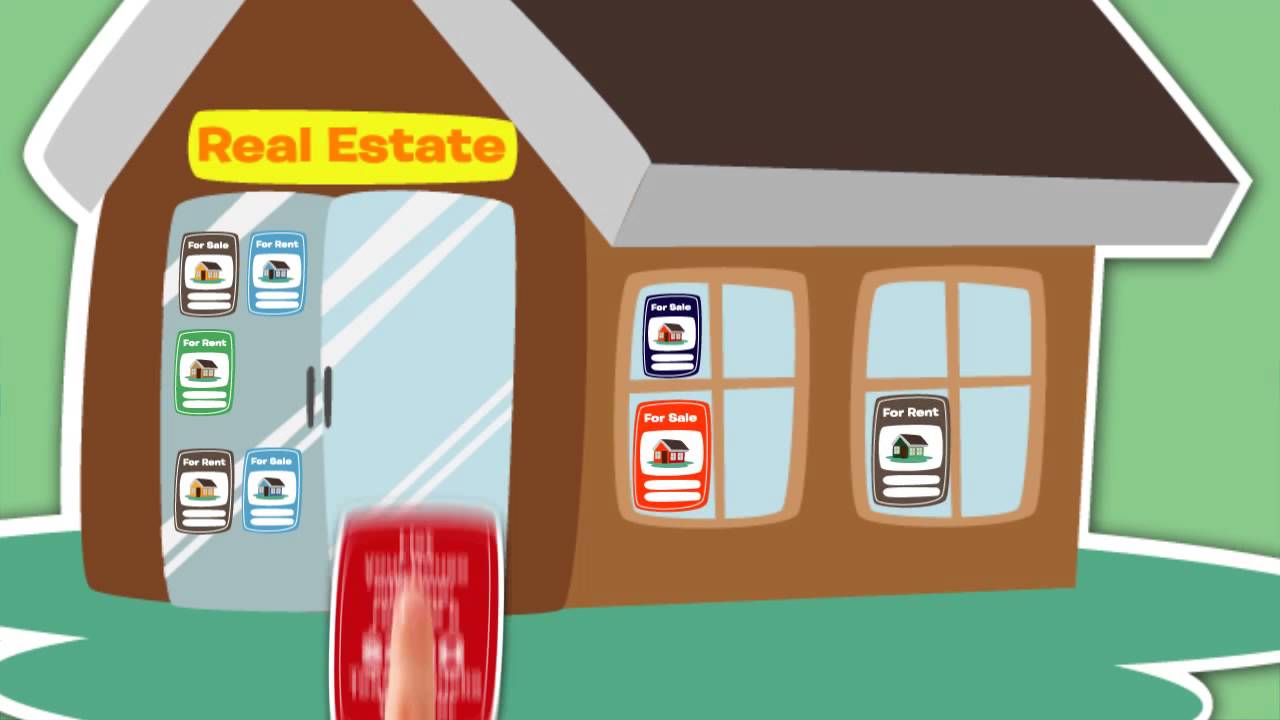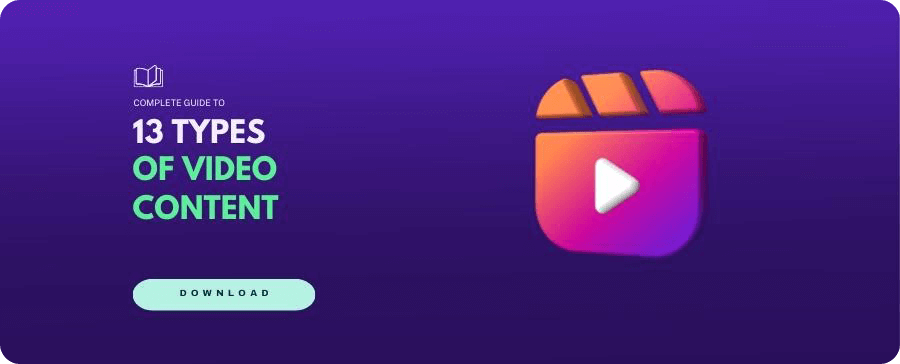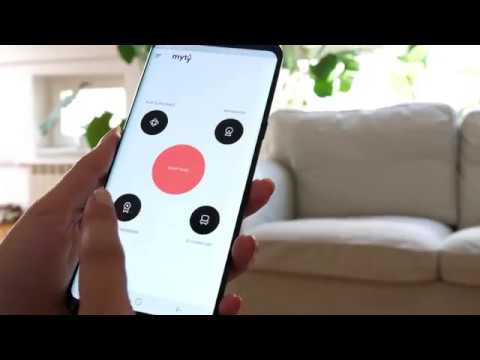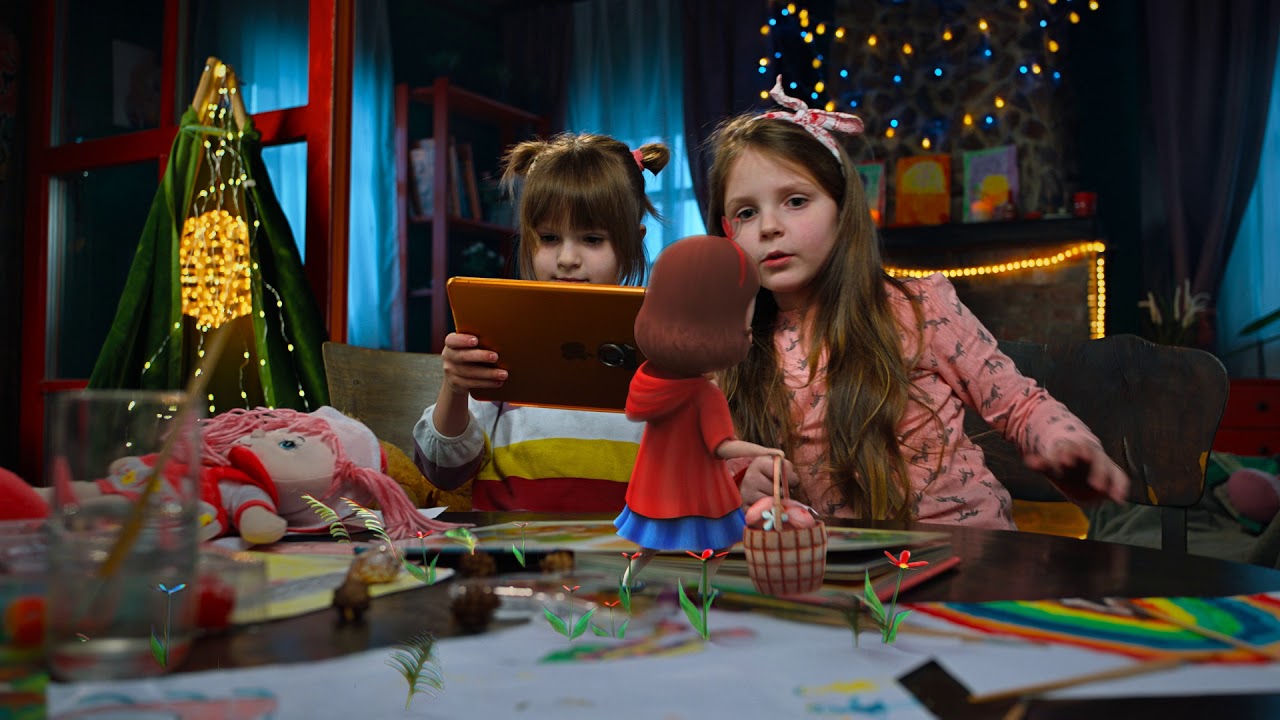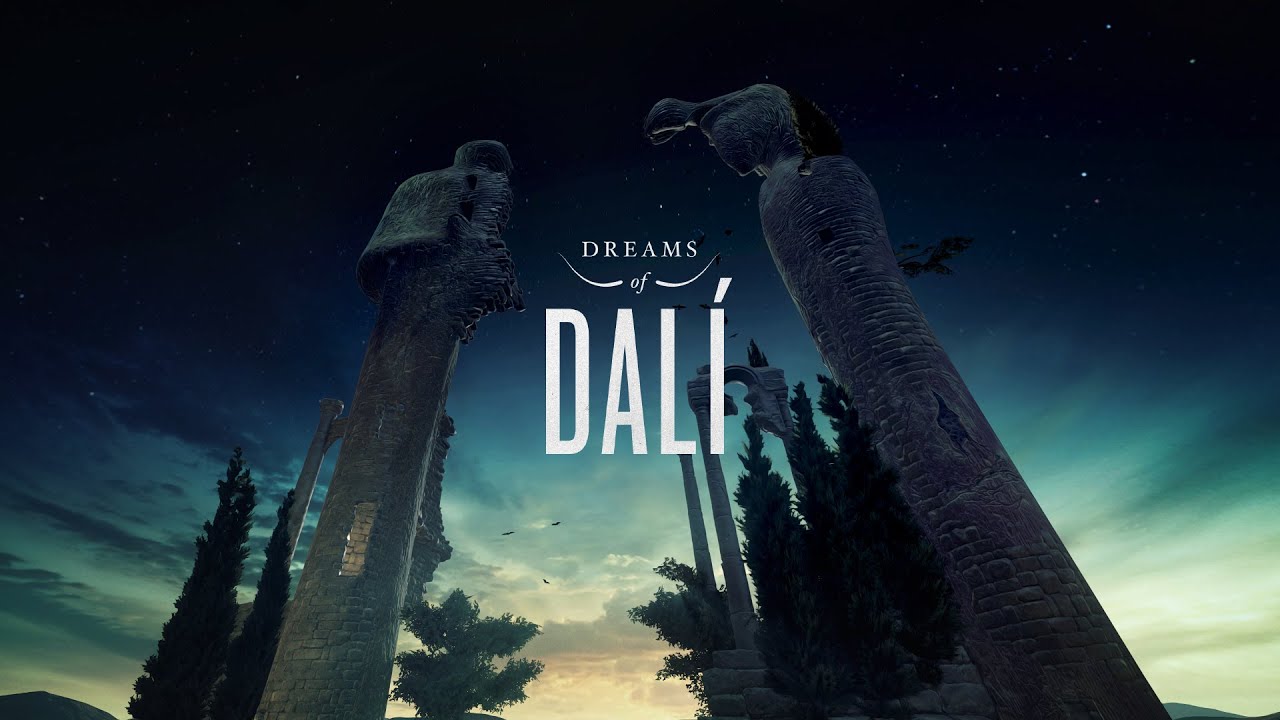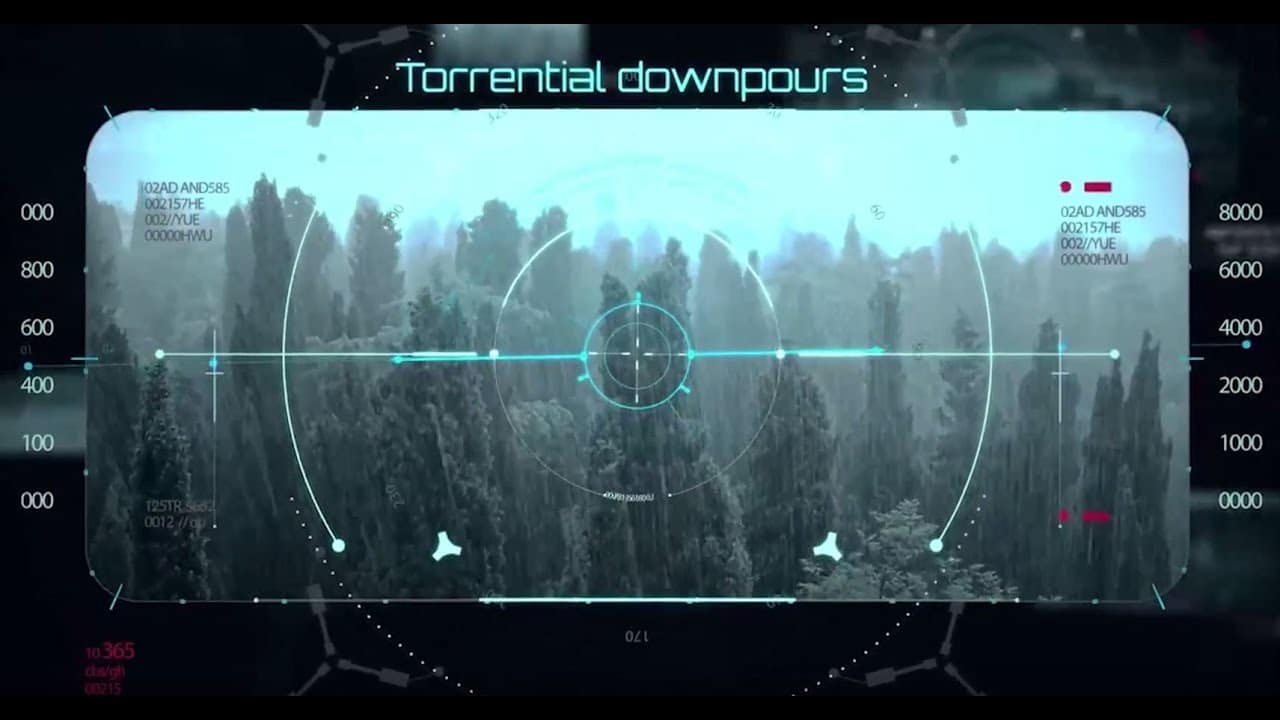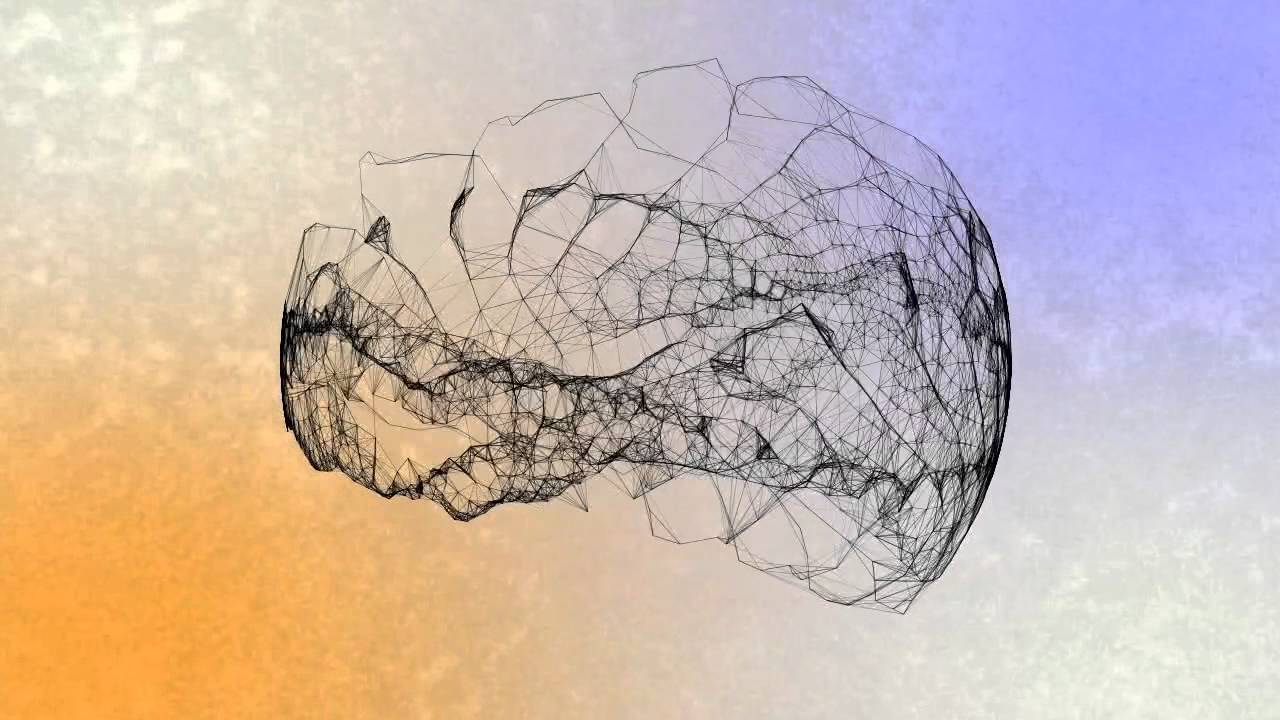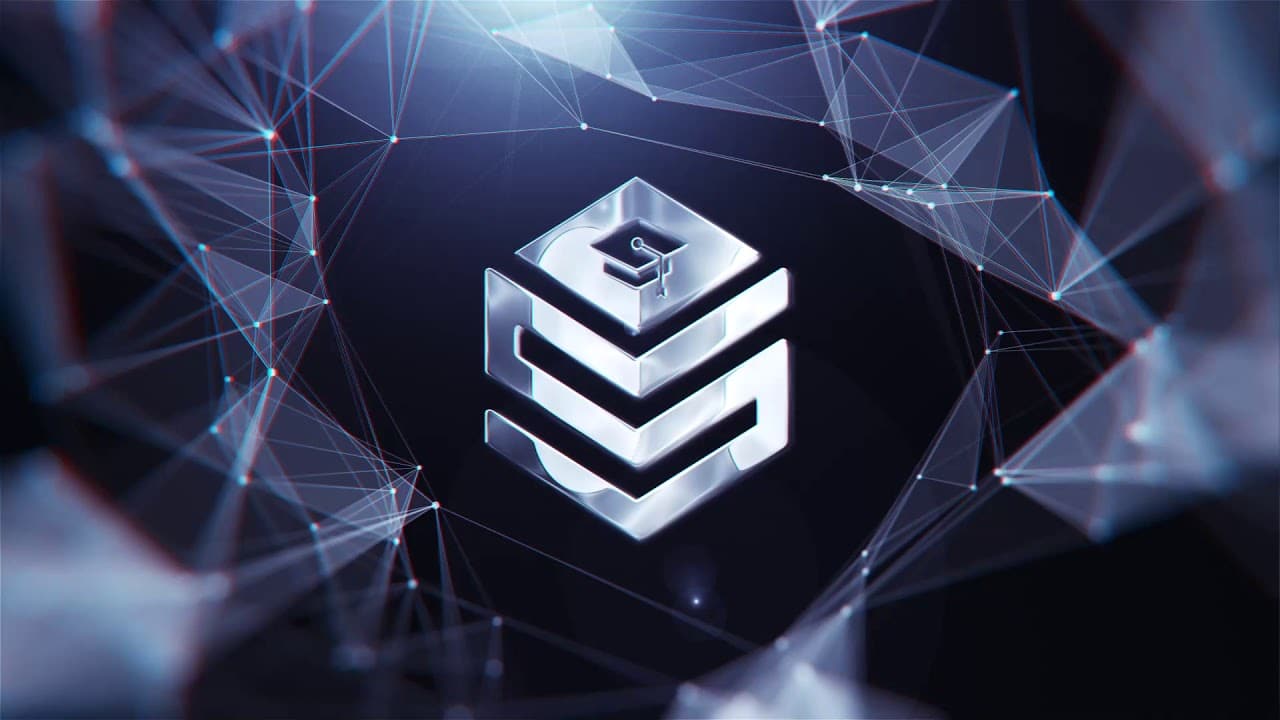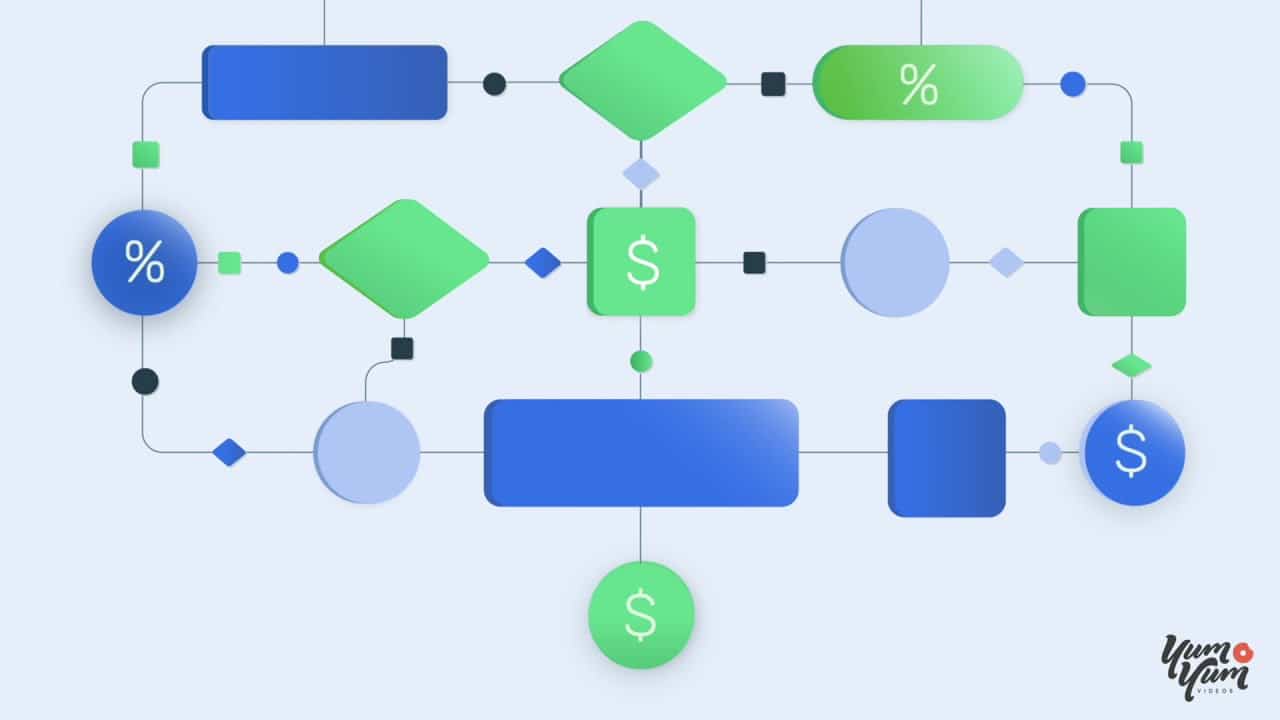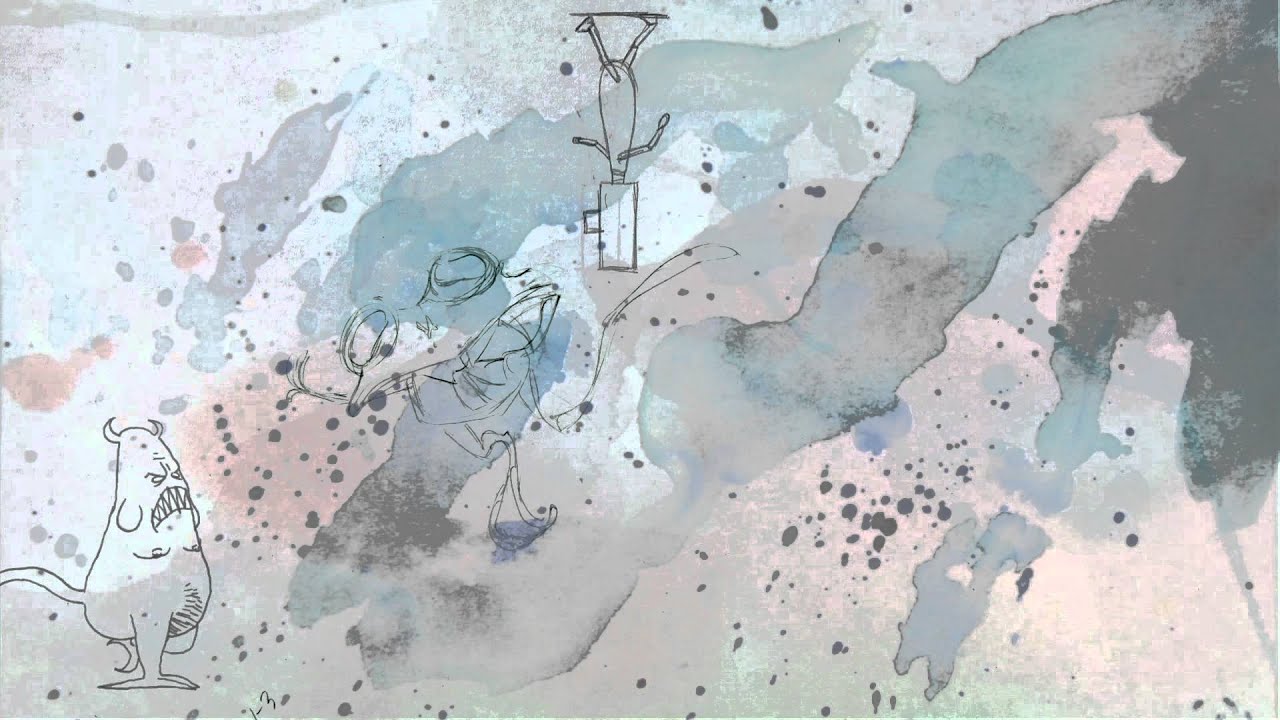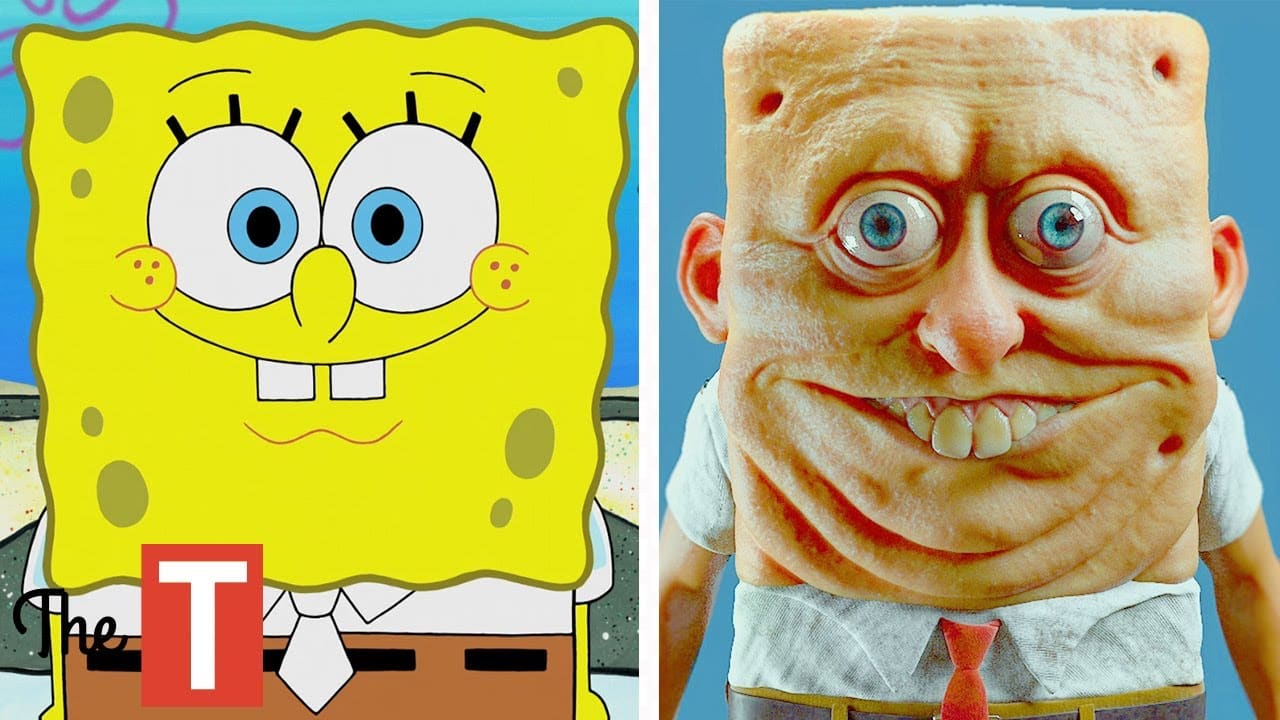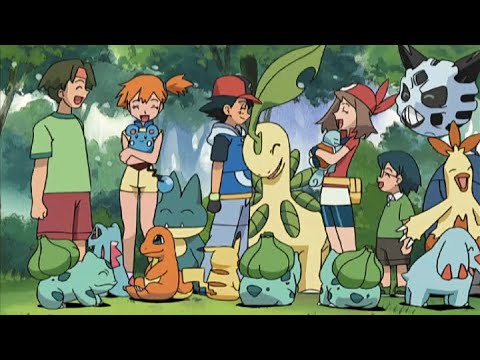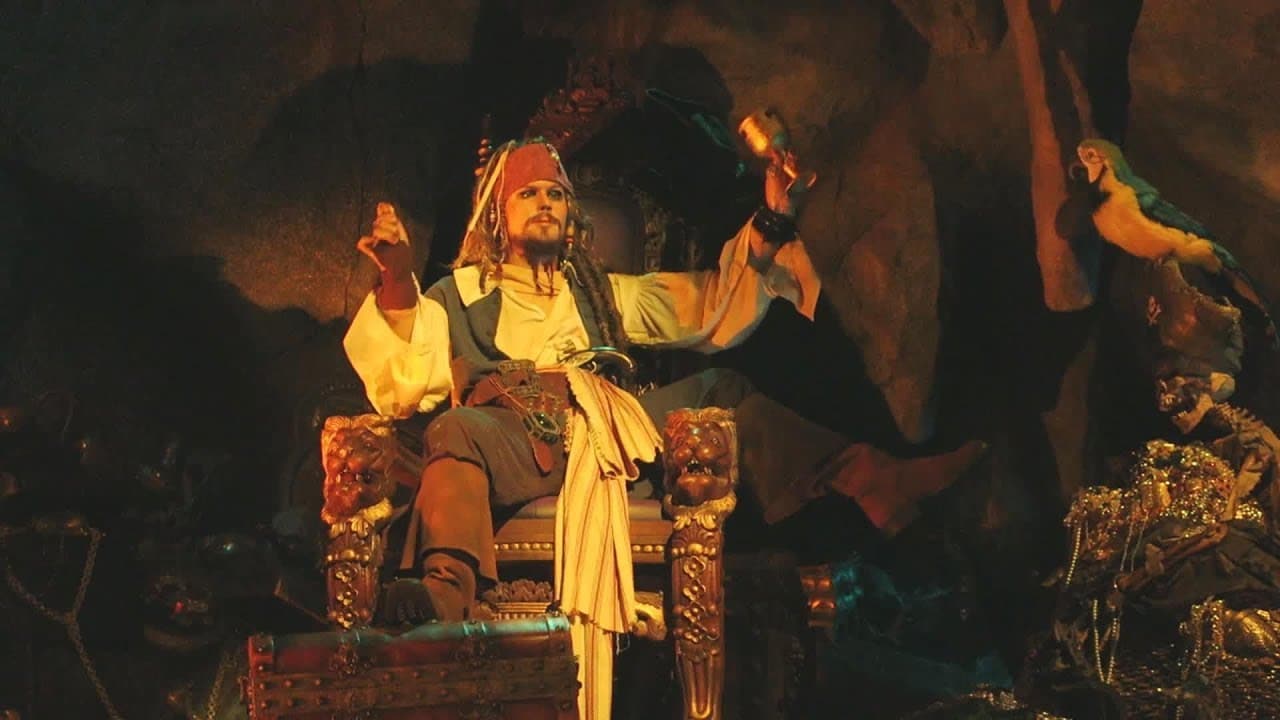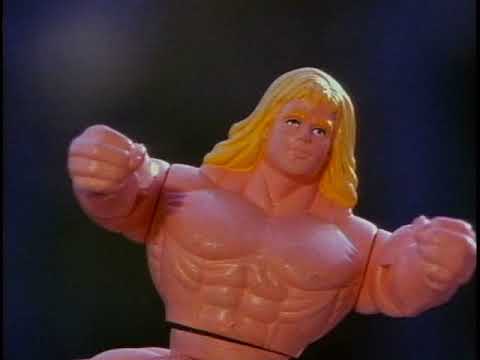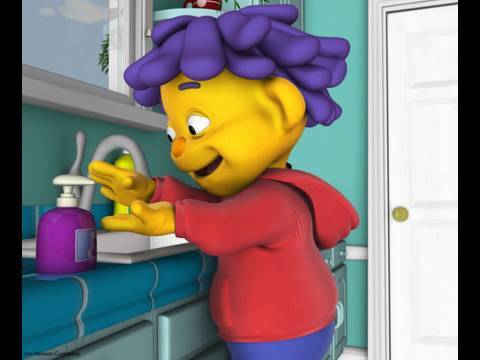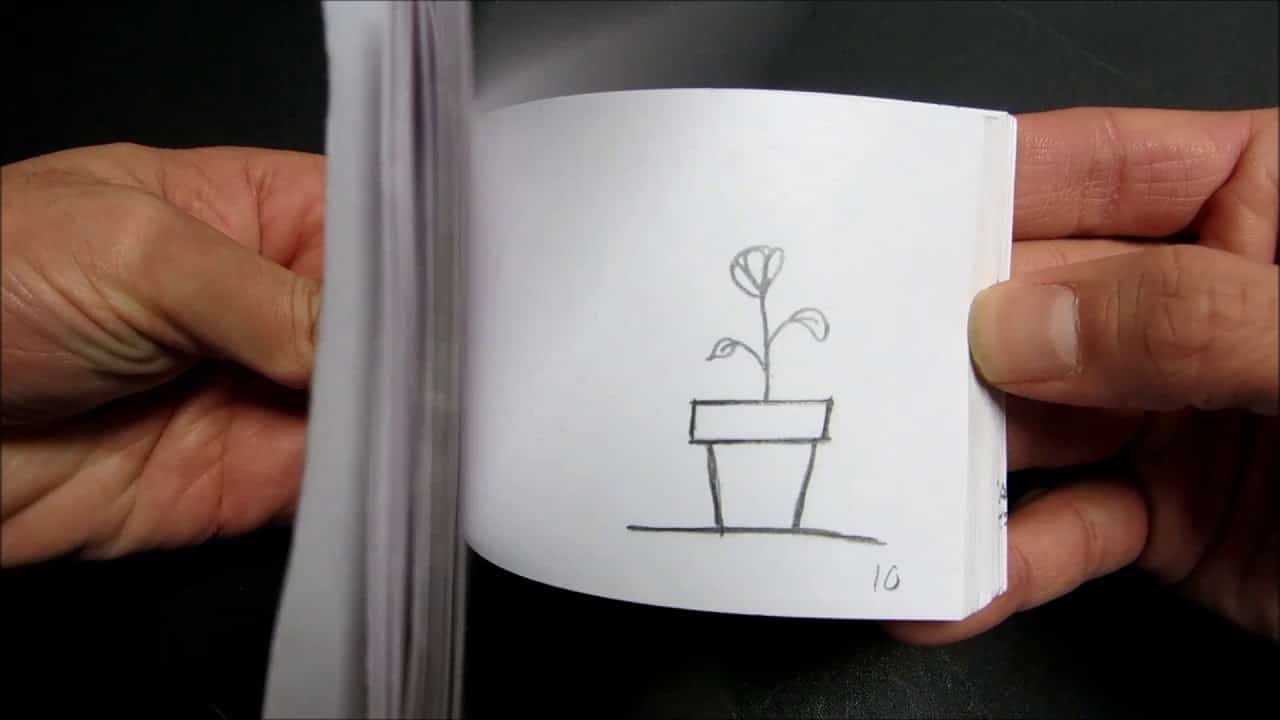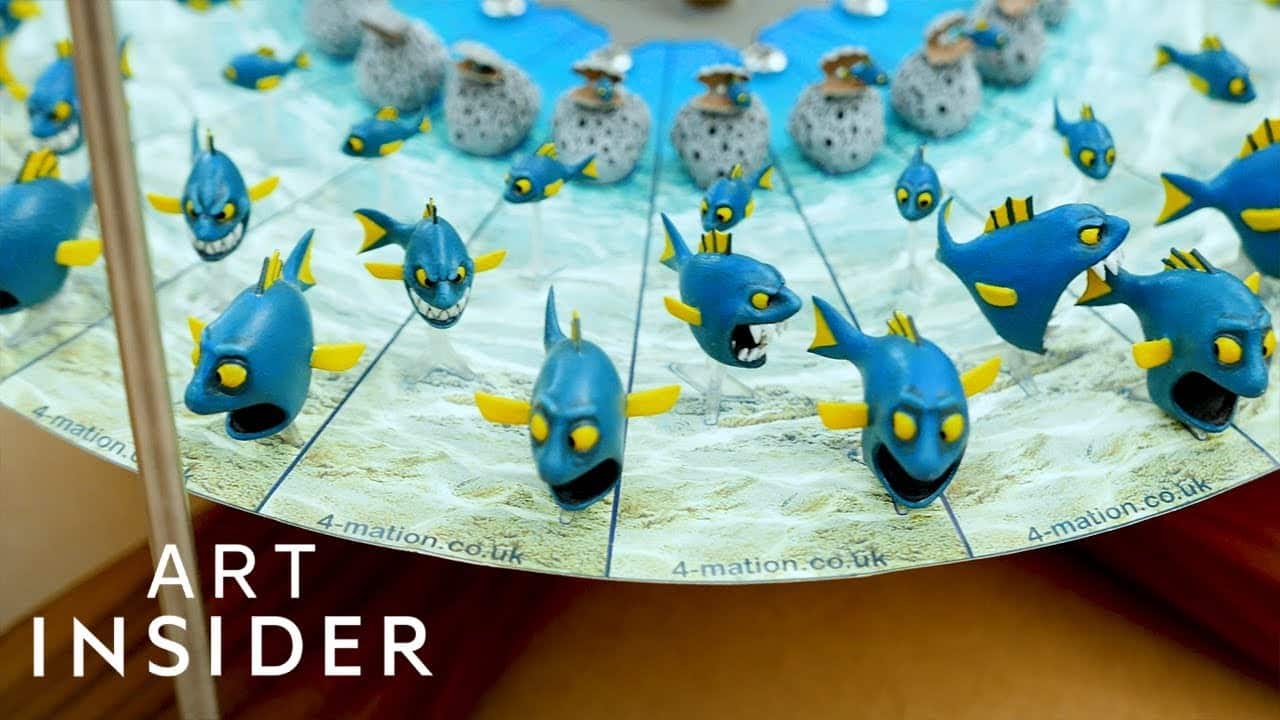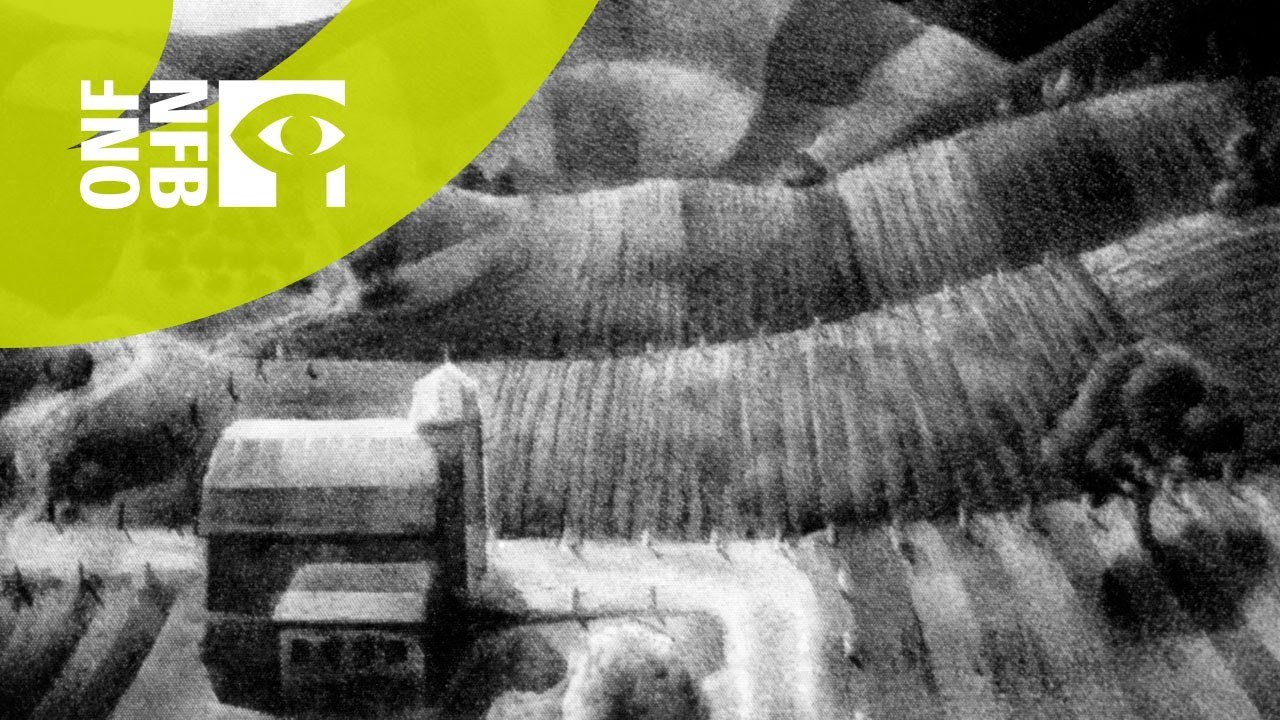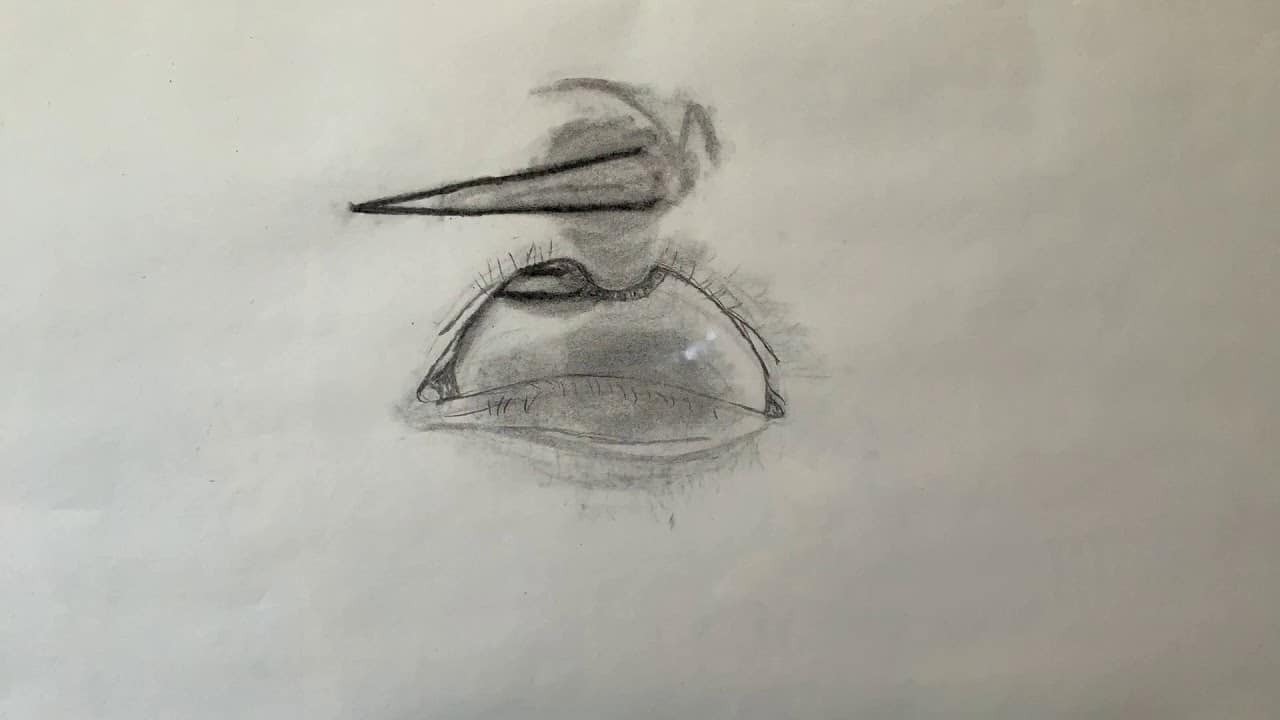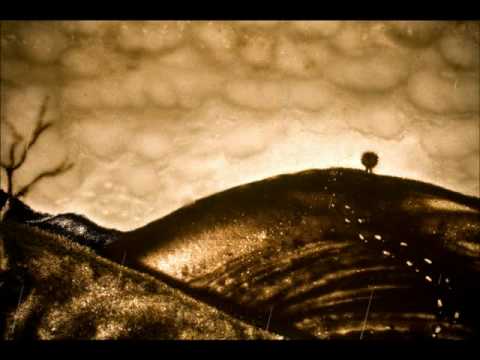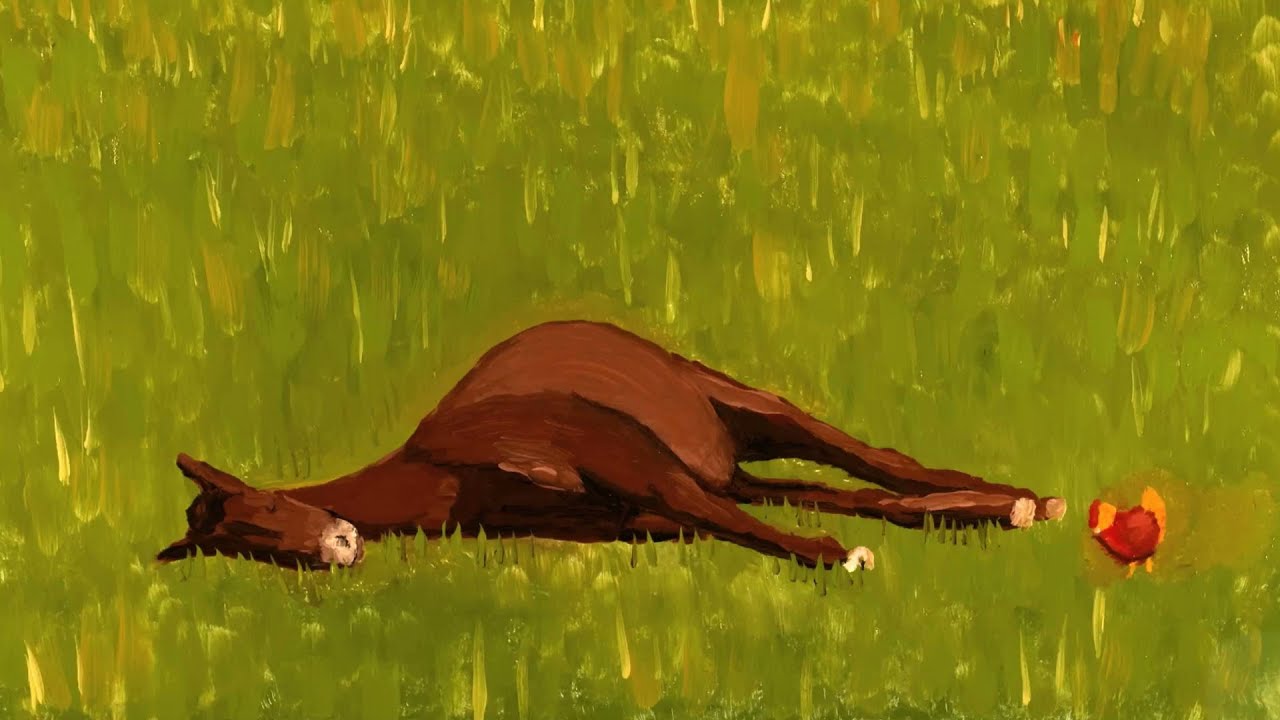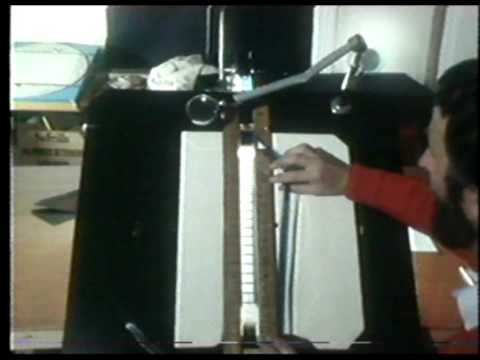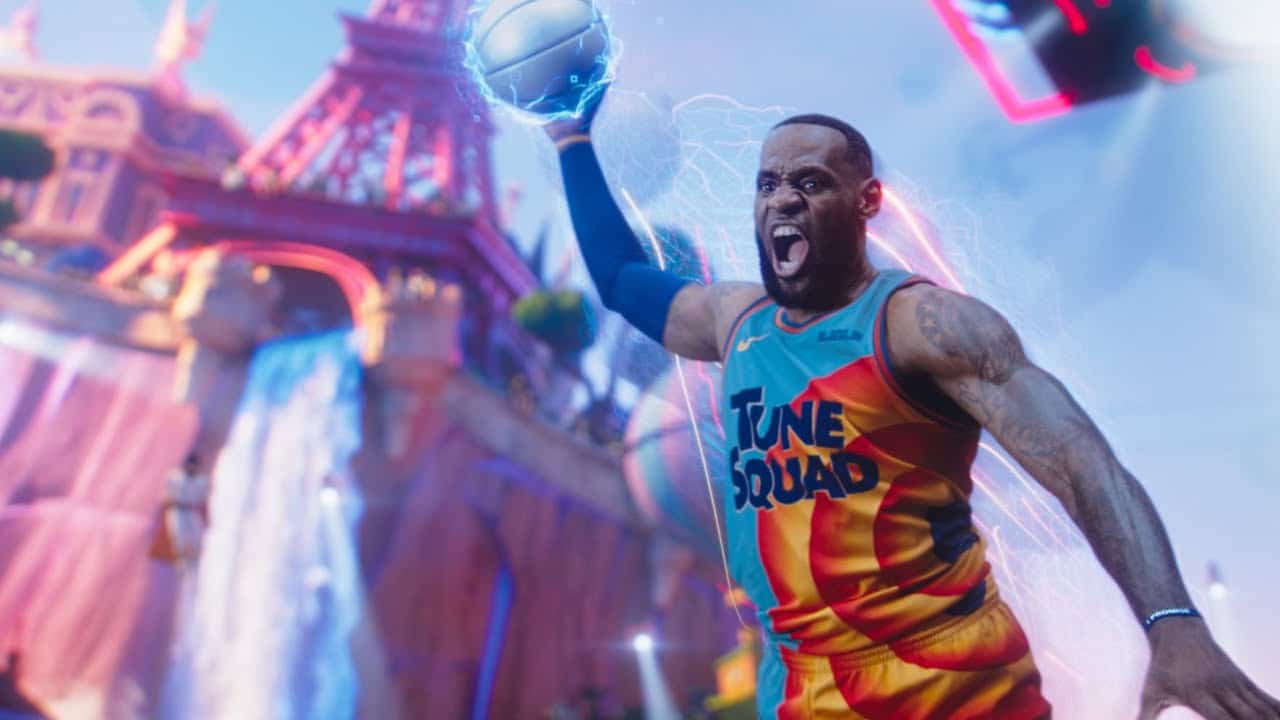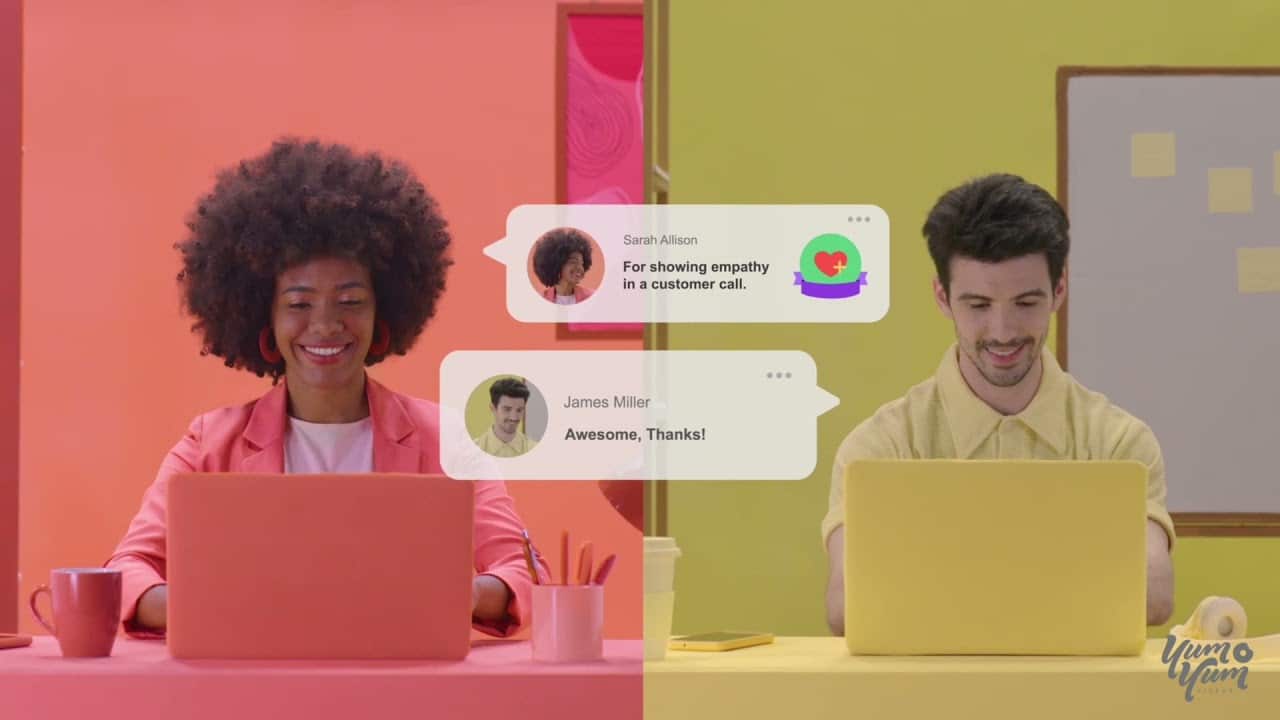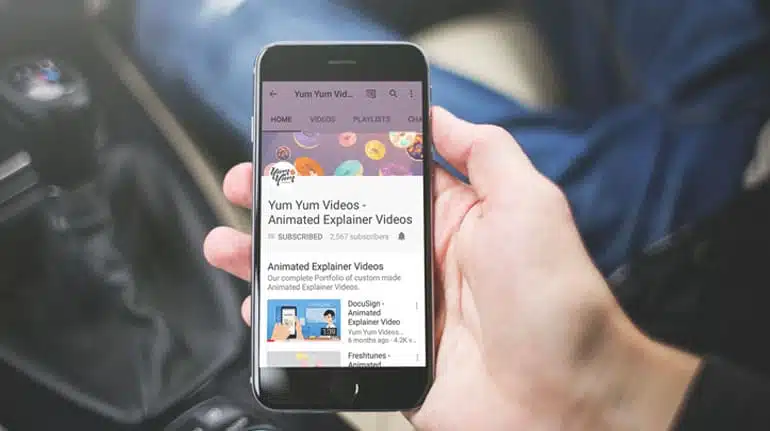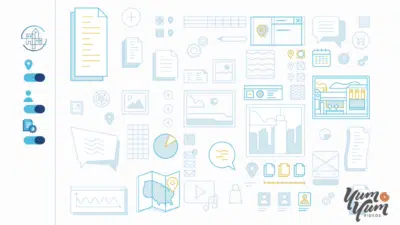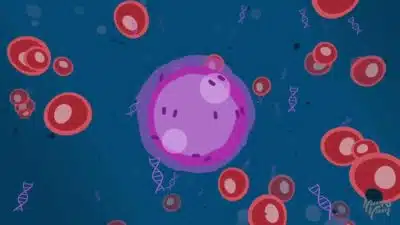Best Types of Animation Styles (and Their Marketing Uses)
08/11/22
Author: Florencia Corazza
25 min reading
MarketingVideo Production

As you might already know, there are many, MANY animation styles out there, each of them bringing something unique to the table. For that reason, there’s a world of possibilities when it comes to leveraging animation to communicate with your audience.
However, the challenge arrives when you have to decide between the different cartoon styles and select the one you’re going to use for your specific marketing purposes. Luckily for you, today at Yum Yum Videos, I’ve put together this guide, in which you’ll find an extensive collection of 35 different styles, along with great examples and ideas on how you could use each of them for your business.
Let me walk you through all of your options! 😃
Table of Contents
1. 2D Animation
2D animation is one of the most popular and widely used types of animation in marketing. Here, animators use computers equipped with special software to create moving characters and scenes in a two-dimensional, flat space.
This speeds up the production process considerably, which is why 2D is a cost-effective option that all kinds of businesses love. But that’s not the only reason why this style is so popular. 2D videos are also highly versatile, as they allow a high level of customization that can help build an appealing and emotion-evoking piece.
2D visuals are particularly good for simple storytelling scripts, and they offer an easy and simple way to quickly turn your message and ideas into marketing videos that get you and your business the results you want.
2. 3D Animation
You’d usually find 3D animation in —you guessed it— animated movies under the name of GGI (Computer Generated Imagery), but it’s also the go-to choice for marketers and brands looking for that state-of-the-art, high-quality finish.
This style’s particular aesthetic provides an immersive experience, as the animation can rotate around or zoom into the graphics for a clearer understanding of how something works. For that reason, it’s widely used in the healthcare, engineering, and construction industries, where accurate representations and a high level of detail are essential.
While 3D can certainly be leveraged for the usual marketing and commercial purposes, it’s an expensive style that has a longer production time than usual. So, 3D animation might not be the best choice where budget or time are a concern.
3. 2.5D Animation
2.5D animation is the perfect solution when you don’t have the time or the resources to make an entire video in the 3D style. How? Well, to put it simply, 2.5D stands in between 2D and 3D animation, as it combines 2D objects in a 3D space to create the illusion of a full 3D scene.
Animators implement different techniques such as shadowing, layering, and perspective adjustments to add volume to a 2D character or object and completely change the way it looks.
The resulting piece boasts a cool effect that makes every element in your video look like they’re in 3D. This cartoon style is particularly useful when looking to create more visually engaging content while staying on a budget.
4. Motion Graphics
Another animation style that’s in high demand is motion graphics, which involves the creation of graphics and their animation to tell a story. These elements will then be combined with charts, text, sound, and narration to communicate complex written information and hard data in a compelling and clear way.
There are many different motion graphics trends that can be used in a diverse range of industries and for a wide variety of purposes.
Do you know what’s the reason for this flexibility? Simple. It’s an easy medium through which to connect with the viewer and add depth to the storytelling while conveying a brand’s message.
5. Typography Animation
Typography animation is a subtype of motion graphics, and it can also be found under the name of “kinetic typography.” This style is all about bringing words to life by adding visual effects and movement to the letters, and stretching, twisting, or distorting them.
That way, the text can act as an individual element or even move in the context of another element in the video. But either way, the ultimate goal is to enhance the script and provide impactful results.
In marketing, this type of animation style is typically used to convey statistical data or survey findings while engaging the viewer, something that’s only possible due to how entertaining and incredibly satisfying it is to watch.
6. Traditional Animation
Traditional animation, also known as cel animation or hand-drawn style, involves drawing every single frame of a film by hand. That’s how animations were created before digital tools came about. Think about older Disney movies like Snow White and the Seven Dwarves or Bambi. Back then, the artist would draw every element on thin, clear sheets of plastic called “cels,” which would then be photographed in sequence for an animated-looking effect.
While this technique has always been quite costly and time-consuming, it’s still used today to give videos a personal touch that makes them distinctive. Characters can be created by hand and then colored and animated digitally to speed up the process.
Traditional animation can be a great idea for any marketing video that’s character-based and that aims at building empathy and increasing engagement.
7. Whiteboard Animation
If you like the look of traditional animation, but would like to skip the painstaking process of hand-drawing every little detail in your video, then I have the perfect alternative for you: whiteboard animation. This type of animation style makes it look like the video’s content is being hand-drawn on a whiteboard.
Whiteboard animation allows you to create wonderful visuals with simple animation. Moreover, the graphics are so rich and easy to understand, that they offer a great opportunity to communicate complex information in a straightforward way.
This low-cost option is a favorite among non-profit organizations, small businesses and startups, and anyone on a budget that wants to capture their viewer’s attention through compelling storytelling.
8. Rotoscope Animation
This style is closely related to live-action footage because back in 1915, artists would project a live-action film onto a glass panel called a rotoscope, and trace over the image frame by frame. The goal was to make movement more realistic by capturing flowing human movements that would otherwise be hard to recreate from scratch.
Rotoscope animation has evolved a lot since then, and is now carried out through special software that simplifies the animation process and gives more fluid motion to the characters.
You can usually find this technique in crowd scenes in movies and in commercials where the animated character or object has to interact with the environment as a real character would. Moreover, rotoscoping helps reduce the cost of 3D production significantly because it makes object duplication easier.
9. Stop-Motion Animation
Just like traditional animation, stop-motion is an animation technique that’s been around for a while now. However, it uses physical objects to create the illusion of movement instead of drawings.
Each object is physically manipulated in incredibly small increments and photographed one frame at a time between every single movement. Yes, it’s as labor-intensive as it sounds because you have to pay close attention to even the smallest of details, but when you stitch the frames together and play them back, the objects appear to be moving on their own.
The resulting video has a special tactile feel that’s quite hard to recreate by digital means, which is why stop-motion animation has survived this long. Moreover, is an incredibly versatile technique that allows you to bring real-life products to life and create narratives around them.
10. Clay Animation
Clay animation, or Claymation for short, is one of the many forms that stop-motion can take. Here, you take a malleable substance such as plasticine clay and use it to sculpt and model each piece in the animation. Then, those pieces are photographed in slight increments to create movement, just like in stop-motion.
While many believe it to be outdated, it has nonetheless endured because of the unique aesthetic and feelings it evokes. Objects molded by human hands will have slight imperfections that make the final piece all the more appealing.
This style can work for younger audiences and when you want to inject your videos with a warm and comforting feel and give them a unique look. If you don’t have the time to make the model manually, there are digital modeling techniques that can help you create that claymation feel.
11. Cut-Out Animation
Cut-out animation originated as a subtype of the stop-motion approach back in the 18th century, when shadow theaters were popular. A laborious technique just like any other stop-motion style, cut-out animation required the creation of characters and objects cut out from paper, cardboard, or other similar materials. The images are then superimposed on each other to create the effect of movement.
This type of animation style is still used to this day, but it has migrated to the digital world, where scanned pictures or vector graphics are used to create explainer videos that are really fun to watch.
Cut-out animation is perfect for narrative-based marketing videos that require a more simplistic cartoon style. However, it’s important to bear in mind that the style won’t boast a high-end finish, which is why is not really suited for tech companies, for example.
12. Screencast Animation
Screencast animation is a great style to show prospective customers how digital services or a piece of software work. It’s simple, yet effective as it allows you to turn screen captures into instructional or informative videos that your audience will find interesting and useful.
Typically, you’ll want to combine the captures with narration and text overlays to explain what’s being shown on the screen and help your viewers understand your message better.
While it’s true that they can simply read a manual or set of instructions to learn the same thing, actually seeing something in use can have a powerful impact on conversion rates.
13. Mechanical Animation
Mechanical animation involves the production of realistic 3D renderings of mechanical products and complex machines to demonstrate how they work from the inside out. Through the accurate representation of different textures and lighting, the viewer gets to see every aspect of the mechanism, from the components’ configurations to the different modes of operation, in high detail.
The ultimate goal of this type of animation style is to provide the best possible visualization. Any extra information will usually be displayed in the form of animated charts and graphs, and sound effects and music will also be part of the final video. The result? An immersive experience that will help the viewer feel like they’re looking at the actual product.
You can often find videos employing this technique in businesses specializing in the manufacture of technical equipment, like those in the aerospace, automotive, food, and healthcare industries.
https://youtu.be/lscRfRlK5QI
However, this doesn’t mean you can’t leverage mechanical animation to showcase the industrial process of any manufactured item! If your marketing goal is to break down the technology of your latest innovation or show off the smaller details of your product, it can be your greatest ally.
14. Isometric Animation
If you want something a bit simpler than mechanical animation, you can opt for the isometric animation style, which seeks to represent a 3D element like an object, a room, or even a building in two dimensions. While this might sound like your regular 2D animation, the goal of the isometric view is to prevent any kind of distortion.
The way that can be achieved is by designing the objects so it seems like you’re looking at them from above and from one corner. For this reason, videos in this style can be used to reveal internal parts of a product that would be otherwise hard to notice.
The architecture and technical engineering industries are quite fond of isometric animation because it helps them clearly visualize individual parts, objects, or projects. You could, for example, explain the different facilities in a building or the mechanisms of a machine in detail without it looking chaotic or messy.
15. Augmented Reality Animation
The blend of live footage with digital objects, and augmented reality harnesses animation to complement digital experiences. While you can frequently find AR in game development, it’s also present in social media in the form of photo effects or filters.
Yes, you’ve read that right. You’ve probably never thought about it before, but adding cat ears or a cool hairstyle to your video or selfie is augmented reality animation.
In the marketing world, this animation style can be implemented to create virtual fitting rooms for eCommerce and retail, for example. It’s also popular among furniture brands because it allows them to show customers how something will fit their homes.
Families with kids love AR animation as well because, within children’s books, characters can jump out from the page —quite literally! The best part of using AR in marketing campaigns for children’s and family brands is that any cartoon drawing style can become a wonderful and enriching experience for your audience.
16. 360° Animation
Just like AR, 360° animation is also quite popular among clothes and furniture retailers. Many claim it’s very similar to 3D animation, but it’s actually a step forward from that style because it allows the viewer to see the entire circumference of a certain object.
Moreover, 360° animation is highly interactive because the audience can interact with different elements in the video, such as hot areas of information, for example. This is a different cartoon style than what you’re used to seeing in marketing, but when you think about it, the possibilities are virtually limitless.
Are you a homebuilder looking to give your clients a virtual tour of your building or house blueprints? Or maybe you’re a manager who needs to train new staff remotely? Perhaps you just want to give your audience an unforgettable experience… Whatever your goal is, there’s no denying that 360° animation allows you to create animated worlds and spaces that people can truly become a part of.
17. HUD Animation
HUD stands for “Head-Up Display,” and if you’re an avid gamer, you’re probably quite familiar with this animated style. HUD animation is frequent in video games, where it’s used to give users information and guidelines in a visual way that doesn’t distract them from the game. You’ll often find a transparent background and a complex, futuristic interface.
Even if you don’t play video games, you might’ve seen HUD animation in sci-fi movies in which the characters visualize data on a transparent screen, such as in the Iron Man movies.
In marketing and advertising, HUD is not as popular as other animation styles, but it can sometimes be found in videos that address futuristic or high-tech products or services.
18. Plexus Animation
In simple words, plexus animation is all about connecting dots and lines to form a flat object or figure. It looks like a mix of motion graphics and HUD animation, resulting in fascinating patterns with a futuristic vibe. I think it’d be easier to show rather than tell, so let’s see a cool example to understand what this is about:
Now that it’s more clear what plexus animation looks like, you should know that just like those two styles I’ve mentioned, this one is vastly used in movie or game intros or credits —but this doesn’t mean it can’t be used in other industries!
For instance, it could be leveraged by security and analytical companies that need to show specific data to communicate a particular fact or by a medical professional who needs to show how a certain body system is interconnected with other systems.
The key is to be creative because even if you don’t deal with high-tech information, you could use plexus animation for a logo reveal!
19. Minimalistic Animation
So far, we’ve seen animation styles of various degrees of complexity, but minimalistic animation, as the name suggests, stands as the simplest of them all.
This approach aims at maximum simplicity and clarity by removing all the flair other styles are known for and keeping just the necessary images and animations to convey your message.
While this animation style might seem easy to make, the challenge lies in coming up with exciting and, most importantly, effective ways to communicate your value proposition while keeping things simple.
Minimalistic animation can be found in explainer videos for online services, apps, software, and other complex services or products that require clean visuals without any of the visual clutter that would otherwise make the viewer feel bombarded.
20. Experimental Animation
Experimental animation is a bit hard to define, as it’s not merely a set of sequential images combined together to create movement, but actually an art form that strives to challenge our perception and emotions.
In fact, this style has been compared to modern art because the viewer will interpret their own meaning and experience unique emotions that might be completely different from someone else’s.
Unlike traditional animation, experimental videos won’t impress you with excellent storytelling because it’s something it actually lacks. This approach has no narration at all, no comprehensive story, and no particular structure. Instead, the animator tries to create a completely new world, unlike anything we’ve ever seen before.
It will certainly be no easy to chore to find applications of this style in marketing, but I can tell you that if you do come up with ways to incorporate it into your existing strategy, you’ll blow your audience’s minds.
21. Realistic Cartoon Style
The realistic cartoon style challenges animators to reimagine what a cartoon character would look like in the real world, or what a real character would look like in a cartoon environment. It’s a fun experiment that can yield all kinds of results, from beautiful works of art to things straight out of your worst nightmare (looking at you, realistic SpongeBob and Patrick 😑).
Developing a video in this style requires a lot of skill and creativity, but it can be useful to engage a broad range of audiences, from little kids who’d like to see their favorite characters come alive, or adults looking for more “mature-looking” cartoons.
22. Japanese Classic Manga
Mangas are Japanese comics or graphic novels, and they can now be animated using 2D technology. Not to be confused with anime, Japanese classic manga animation offers stiffer character movements, not-so-smooth transitions, and a “less polished” aesthetic that closely resembles that of an actual manga. Traditionally, the animation should be done in black and white, but using colors is also accepted.
This style is intended for a very specific audience that will know to appreciate its particular look. That’s why it can be a great idea to employ it in videos for international brands looking to expand their businesses to Japan, for example.
23. Anime
Now, unless you’ve been living under a rock for over a decade, you must know what anime is. Basically, it refers to animations produced in Japan, which are characterized by particular cartoon drawing styles.
While some animators prefer to use realistic characters, the most popular anime trend is to wildly exaggerate certain features of them. If you pay attention, you’ll find that the most common feature in anime characters is their oversized and expressive eyes. But you’ll also come across unrealistically bright hair colors and crazy body proportions to convey a specific age, status, or personality trait.
Unlike traditional cartoons produced in the rest of the world, Japanese anime is frequently geared toward adult and young-adult viewers, which is why the storylines usually feature controversial or complex topics. Despite that, there’s still plenty of anime content for children! This means you can harness this style regardless of the demographic your campaign is designed to target.
24. Motion Comic
Motion comics are simply animated digital comics. In most cases, animators take the original comic as the starting point and add animation elements to make the story flow. You might also find them online as “Flash comics” because of the use of Adobe Flash to animate them, or as “vomics” (voiced comics), as they’re known in Japan.
Some motion comics include speech bubbles and others have either music or professional voice-acting, but there are no set rules. What to do regarding this aspect of comics is entirely up to the animator and the audience’s preferences.
25. Autonomatronics and Audio-Animatronics
If you know what animatronics are, you’re probably thinking it’s quite out of place among these animation styles. However, the term was born from the combination of the words “animation” and “electronics,” and it refers to the technique of electronically animating 3D characters, either for their use in movies or at museums and theme park attractions.
“Audio-Animatronics,” on the other hand, is the registered trademark name for a form of robotics that Walt Disney Imagineering created for their shows and theme parks. The mechanical figures are synchronized with an audio soundtrack that gives the illusion of the robots moving and making noise or singing. However, they’re fixed to their support, and while they can sit and stand, they usually can’t walk or respond to external stimuli.
26. Chuckimation
Chuckimation is a peculiar type of animation in which the characters are real-world objects which are thrown or chucked to simulate movement. They’re also wiggled around to make it look like they’re talking.
This combination of stop-frame animation and live-action shots was created by the producers of a cartoon called “Action League Now,” but it’s not so widespread at present so using it in video marketing can be tricky.
Off the top of my head, I might suggest kid’s toy companies could benefit from chuckimation. For example, they could launch a contest for kids to create a very short story with their toys, record it, and send it. Then, the winner could get their story shared on the company’s social media. This way, the brand could build a deeper connection with the target audience, entertain them, and gain good promotion at the same time.
27. Puppetry Animation
Puppetry Animation was born in 1906 when a Russian ballet choreographer called Aleksandr Shiryaev made the very first puppet animation film. It involved papier-mâché figures that danced ballet against a still background of theatrical decorations.
Like with traditional animation and stop-motion, making a puppetry animation video is a labor-intensive process that required incredible precision. Especially when you consider the times when an entire group of characters required simultaneous movement!
Nowadays, this style borders the line between puppet theater and 2D, or even 3D animation, with the introduction of puppet characters into a digital world.
As for marketing applications… well, it’s another style you could use to make cartoons with creative storytelling for different audiences, whether they’re made up of children or adults.
28. Flipbook Animation
Flipbook animation is a simple yet fun technique to bring very short stories to life. I’m sure you’ve seen (and maybe even made!) one of these before. Here, a scene is broken down into several illustrations that are hand-drawn onto the pages of a flipbook that’s rapidly flicked through to create a moving picture.
This is probably the most basic way to make an animation, as flipbooks are typically 15 seconds long. But hey, I hear there’s a social media platform in which that kind of video is particularly popular 😉.
The truth is that this medium is not really that effective in marketing, unless, of course, you’re looking for a creative way to entertain your prospects.
29. Zoetrope Animation
This is probably the oldest style of animation, with the first record of it in use dating back to 180 BC 😱. The name “zeotrope animation” comes from the special tool required to give movement to the characters… a zeotrope.
If you’ve never seen one before, just imagine a drum without a cover and with vertical cuts on the sides. If you look through the cuts, you’d see a ribbon with drawings that, as the drum spins, would show a rapid succession of images that form a short animation.
This style is not really seen in marketing because it requires an actual zoetrope, but it’s still worth mentioning as you can find it at museums and theme park attractions.
30. Pinscreen Animation
This is one of my favorite styles because of how creative and unusual it is. To make a pinscreen animation, you’ll need a board and thousands of metal pins or needles. No, I’m not lying. As the needles are pushed through the board, they can copy the shape of an object. Then, the screen is lit from one side so that the needles cast shadows and create an image.
Pinscreen animation is considered to be the predecessor of computer graphics, with each needle being a pixel of a computer monitor. Pretty cool, don’t you think?
While this style is not particularly useful in marketing, it can help you create distinctive and mesmerizing animations with an otherworldly look and feel.
31. Erasure Animation
A simpler style that only requires white paper, a pencil or a piece of charcoal, and an eraser to create a story, erasure animation offers an alternative for animators to give their creativity free rein without fear of making mistakes.
You see, erasure animation doesn’t have to be perfect or look clean and polished. On the contrary, you usually use the same sheet of paper to make the entire animation, with smudges being a prominent feature of the style.
Leveraging this technique can be an interesting addition to your strategy. If you don’t want to make it by hand, I’m sure it could be recreated digitally.
32. Sand Animation
To make sand animation, you’d need to get a glass table that you can light from underneath and, of course, a lot of sand. So, what you do is create an animation by moving the sand around and, like with erasure animation, erase your creation as the scene progresses.
Each stage of the process is photographed, and then all the pictures are merged to create movement. This takes quite some time to complete, which is why sand animations tend to be short. Nonetheless, the results are stunning.
While the execution of this technique is rather complicated, there are some marketing situations in which it could be used. For example, you could showcase the history of a certain product and its evolution through time.
33. Paint-on-Glass Animation
Like any work of art, paint-on-glass is a complex animation technique that calls for efficient artistic skills, as each frame comes to life right in front of the camera and only lasts for a fraction of a second before the next frame takes its place.
The animator uses slow-drying paints to create the scene on a glass canvas, which doesn’t really sound that difficult. The challenge comes when they have to manipulate the painting and photograph them at the same time. For that reason, they often used turpentine to make the paints easier to work with.
This impressionist style, while wonderful to watch, is unfortunately not very popular due to the high level of skill it demands from the artists.
34. Drawn-on-film Animation
Another fun yet kind of outdated style is drawn-on-film, which requires manipulating an exposed film reel. There are a few different techniques that can be employed, such as punching holes into the film, scratching and etching it, or introducing light variations in the darkroom to permanently embed shadows on it.
Drawn-on-film dates from around 1916 but, unfortunately, most of those animations have been lost. However, enough survived to know that the animators worked with either developed or undeveloped of all sizes, although larger sizes were preferred since they were easier to work on.
One of the perks of this style is that no cameras are required, making it one of the cheapest around. Though you’d certainly need a projector to see the final animation. And while you might not be able to use it for marketing purposes, it’s still interesting to learn how it worked.
35. Live-Action Blending
Finally, we have videos that combine animation with live-action footage and that tend to showcase characters and objects in both styles interacting with each other. You can have cartoon characters in live-action shots or real actors in animated footage. The Space Jam movies are an excellent example of the blending of both styles.
This hybrid style is quite popular in marketing because the human component, brought to life by expert live-action video production, makes the message more relatable, whereas the animated elements make it easier to understand and more interesting to watch.
Wrapping Up
The power of animation lies in that it’s not bound by the laws of reality, and the only limit to what you can create to engage your audience and convey your message is your own imagination.
Whether you want a fun, short clip that can become viral on social media or an explainer video to break down the basics of your product or service, there’s always an animation style that perfectly suits whatever you need to communicate (and if you don’t believe me, you can check out some product video examples!).
Some of these styles are more well-known than others, but in this guide, I’ve made sure to include all of them so you can make an informed decision. As a final piece of advice, focus on your preferences and the video’s theme, setting, and tone of the story you want to tell before you start shortlisting your options.

Florencia Corazza – Content Writer and Co-Editor
A skilled writer, translator, and co-editor for our web and blog content. As a self-defined "wordsmith," she’s talented in adapting the latest marketing news into all kinds of digital formats. If she’s not watching the latest Sci-Fi show on Netflix, then can find her tending to her perfectly reasonable number of plants.
